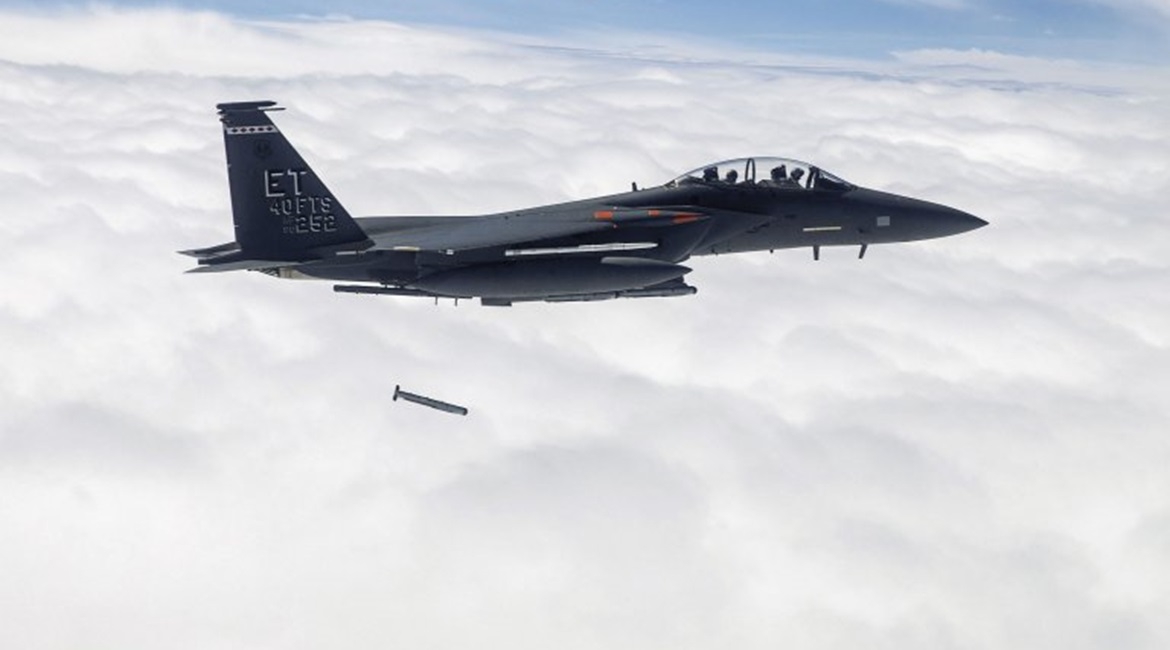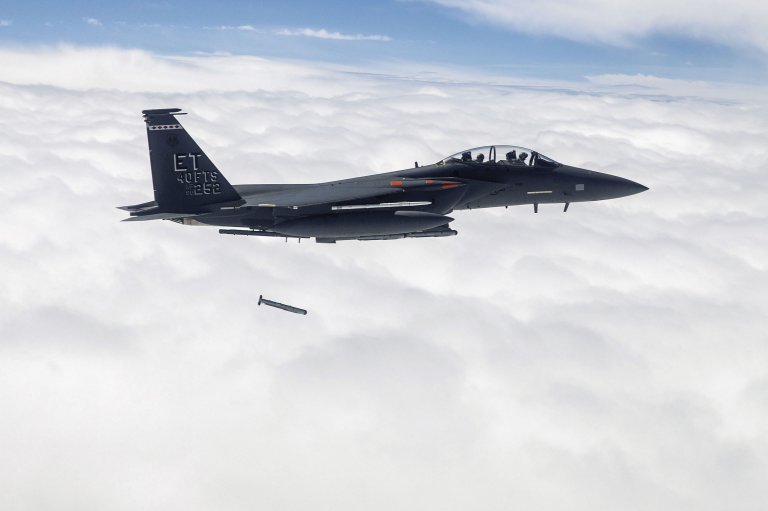
The US Air Force (USAF) is expected to declare an initial operational capability (IOC) with Raytheon Missile Systems’ StormBreaker smart weapon on the Boeing F-15E Strike Eagle multirole combat aircraft in the third or fourth quarter this year following completion of the operational test and evaluation (OT&E) phase of the development programme in May.
Optimised to address moving battlefield targets, StormBreaker – formerly designated ‘Small Diameter Bomb II’ – is a 250 lb-class, air-launched unpowered glide weapon system furnished with a unique tri-mode seeker that combines millimetre wave (MMW) radar, imaging infrared (IIR), and semi-active laser (SAL) sensors with a GPS/inertial navigation system (INS) autopilot for precision accuracy in adverse weather conditions. The seeker’s optical dome is protected by a clamshell shroud, which is jettisoned before the seeker is activated. A Rockwell Collins TacNet bi-directional dual-band datalink enables Joint Tactical Information Distribution System (JTIDS) connectivity with aircraft and an ultra-high frequency (UHF) link with a ground designator.
Equipped with a deployable wing assembly to achieve stand-off engagement ranges in excess of 70 km, StormBreaker incorporates a multifunction warhead (blast, fragmentation, and shaped charge jet) designed to defeat armoured and non-armoured targets; a redesign of the warhead was performed during the development cycle to provide the capability to disable or defeat main battle tanks. The warhead fuze can be set to initiate on impact, at a pre-set height above the intended target, or in a delayed mode. The munition operates in three principal attack modes: normal attack (NA), laser-illuminated attack (LIA), and co-ordinate attack (CA). It can be used against moving or stationary targets using its NA (MMW/IIR) sensors or LIA modes, and against fixed targets with its CA mode.

Looking to read the full article?
Gain unlimited access to Janes news and more...


